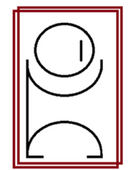Spreading Holiday Cheer: Heartwarming Gestures for Patients Without Family
The holiday season can be a joyful time, but for some patients, especially those without family nearby, it can also feel lonely. As a Home Health Aide (HHA), Certified Nursing Assistant (CNA), or Personal Care Aide (PCA), you have the unique opportunity to bring comfort, connection, and holiday cheer to your patients. A small act of kindness can make a world of difference, helping them feel cared for and remembered during this special time of year. Here are a few heartfelt ways you can make the holidays brighter for your patients.
1. Create a Festive Atmosphere
Bring the holiday spirit into their living space by decorating with simple, cheerful touches.
- Use items like small Christmas trees, garlands, or twinkling lights for a cozy feel.
- Incorporate their favorite holiday colors or themes.
- If they celebrate a different holiday (like Hanukkah or Kwanzaa), include decorations that honor their traditions.
Involving the patient in decorating, even in small ways, can make them feel engaged and excited for the season.
2. Bake or Cook a Holiday Treat Together
Sharing food is a timeless way to connect.
- Bake cookies, pies, or other traditional holiday treats that are safe for their dietary needs.
- Work together to make a simple dish, like festive fruit salad or spiced hot cider.
- Package some treats to share with neighbors or other caregivers, adding an extra layer of joy.
Cooking or baking together can evoke fond memories and create new ones, turning a routine day into a festive celebration.
3. Organize a Virtual Family Connection
If your patient has distant family or friends, help them reconnect virtually.
- Arrange a video call or assist with sending holiday cards or emails.
- If technology isn’t an option, encourage their family to send letters, photos, or small gifts that you can help deliver.
Your effort to facilitate these connections can bridge the gap and make your patient feel loved, even from afar.
4. Give a Thoughtful Gift
A small, meaningful gift can go a long way in lifting their spirits.
- Consider items like cozy blankets, socks, or slippers to keep them warm during the season.
- If they enjoy puzzles, coloring, or crafts, choose an activity to keep them engaged and entertained.
- Handmade gifts, such as a card or a small ornament, can feel extra personal and heartfelt.
5. Spend Quality Time and Share Stories
Sometimes, the most valuable gift is your time.
- Sit and listen to their favorite holiday stories, traditions, or memories.
- Watch a holiday movie together or play festive music that they enjoy.
- Engage them in simple holiday crafts, like making paper snowflakes or decorating cards.
Your presence and willingness to share these moments can make them feel seen and valued during a season that might otherwise feel isolating.
6. Create a Gratitude Ritual
Help your patient reflect on the positive aspects of their life by starting a gratitude practice.
- Encourage them to share what they’re thankful for.
- Write these reflections down or create a "gratitude jar" where they can add notes daily.
- Share your own gratitude for their companionship, reminding them of their importance to you and others.
This practice can foster positivity and bring emotional warmth during the holidays.
The holiday season is about spreading love, warmth, and kindness—and as a caregiver, you are in a wonderful position to make a difference. Whether it’s decorating their space, sharing a meal, or simply spending quality time together, these small acts of care can create lasting memories for your patients. By bringing the holiday spirit to those who may feel alone, you remind them that they are valued and cherished, making the season truly magical.





